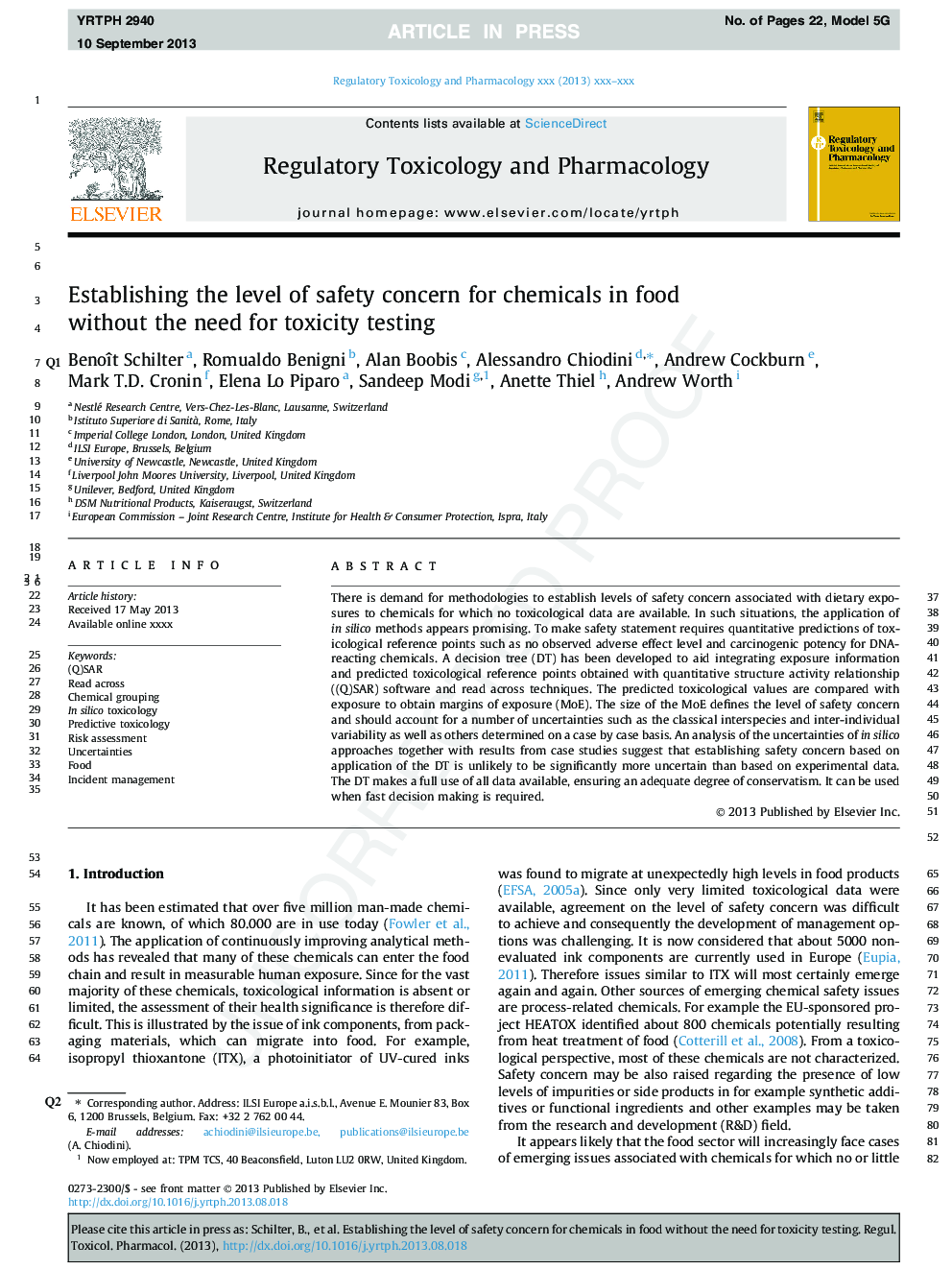| Article ID | Journal | Published Year | Pages | File Type |
|---|---|---|---|---|
| 5856770 | Regulatory Toxicology and Pharmacology | 2014 | 22 Pages |
Abstract
There is demand for methodologies to establish levels of safety concern associated with dietary exposures to chemicals for which no toxicological data are available. In such situations, the application of in silico methods appears promising. To make safety statement requires quantitative predictions of toxicological reference points such as no observed adverse effect level and carcinogenic potency for DNA-reacting chemicals. A decision tree (DT) has been developed to aid integrating exposure information and predicted toxicological reference points obtained with quantitative structure activity relationship ((Q)SAR) software and read across techniques. The predicted toxicological values are compared with exposure to obtain margins of exposure (MoE). The size of the MoE defines the level of safety concern and should account for a number of uncertainties such as the classical interspecies and inter-individual variability as well as others determined on a case by case basis. An analysis of the uncertainties of in silico approaches together with results from case studies suggest that establishing safety concern based on application of the DT is unlikely to be significantly more uncertain than based on experimental data. The DT makes a full use of all data available, ensuring an adequate degree of conservatism. It can be used when fast decision making is required.
Keywords
Related Topics
Life Sciences
Environmental Science
Health, Toxicology and Mutagenesis
Authors
Benoît Schilter, Romualdo Benigni, Alan Boobis, Alessandro Chiodini, Andrew Cockburn, Mark T.D. Cronin, Elena Lo Piparo, Sandeep Modi, Anette Thiel, Andrew Worth,
